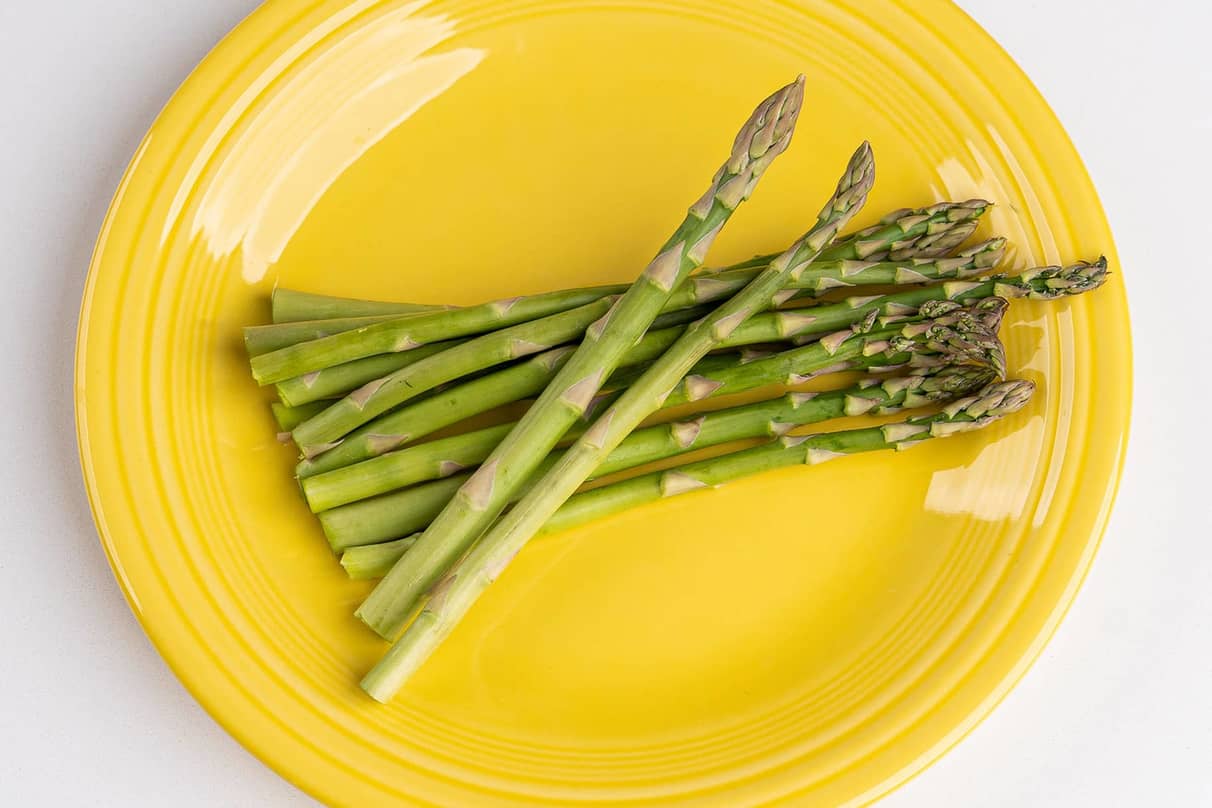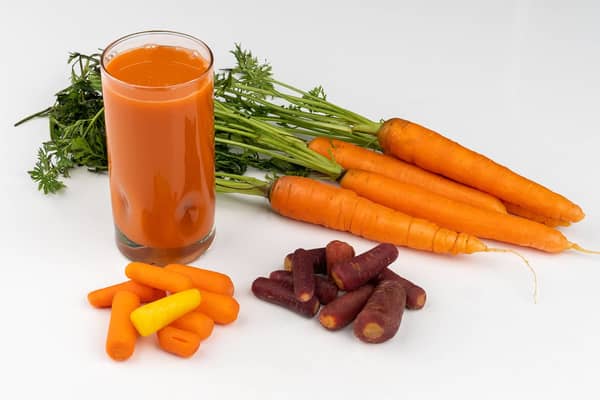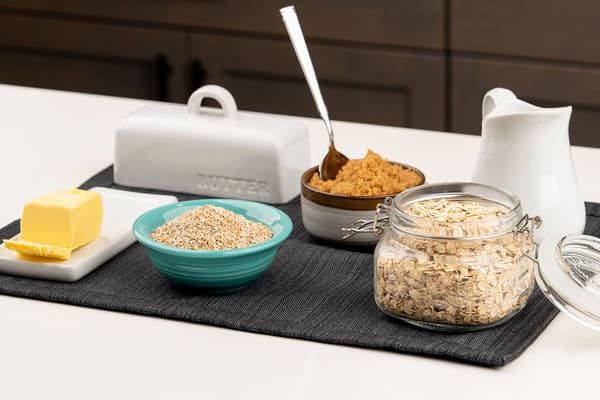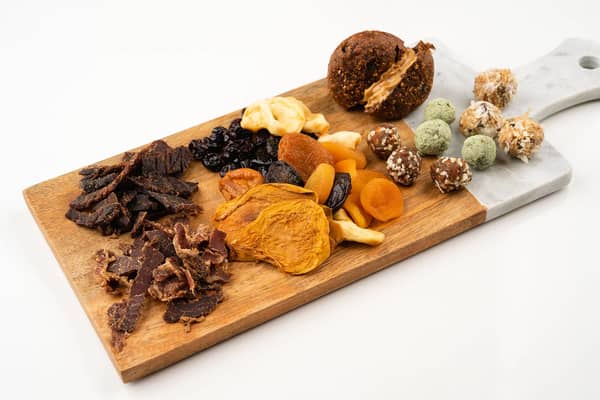8 Low-carb Vegetables To Add to Your Grocery List
Nutrition
These produce items offer loads of nutrients that are also low in carbohydrates.

If you’re aiming to up the fiber and lower the carbs on your plate, consider turning to non-starchy vegetables, Ginger Hultin, R.D, recommended. These produce items can also help you accomplish an assortment of goals, from shedding pounds (if that’s your aim) to being more regular.
Non-starchy vegetables are low in calories, yet full of fiber and vitamins, minerals, and phytochemicals. The latter are nutrients found in produce and other plant foods, which may help reduce the risk of major chronic diseases, including heart disease and cancer.
So, head to the grocery store and load up on seasonal, low-carb vegetables, such as tomatoes and cucumbers in summer and cabbage in early fall. To find out which of your favorite veggies are in season, check out resources (like this one) from the USDA. Then, scoop up these dietitians’ top picks.
(Related: 4 Fall Dinner Ideas From a Registered Dietitan)
But, before diving into this list of low-carb vegetables, here’s one important note about carbs: The macronutrient is an integral part of a healthy diet. Carbohydrates provide glucose (sugar), which the body converts into the energy needed to support movement and bodily functions. Be sure to work with a dietitian or other credentialed health professional to make sure you’re eating enough carbs, especially if you’re following a low-carb diet.
8 Low-Carb Vegetables Dietitians Love
1.Asparagus

Benefits:
Reach for asparagus to load up on inulin, a type of prebiotic that feeds the “good” bacteria in the gastrointestinal, or GI, tract, said Kristian Morey, R.D., L.D.N., and a clinical dietitian at Mercy Medical Center in Baltimore, M.D. The low-carb veggie is also rich in the antioxidant glutathione, Morey said. Glutathione helps cells in the body excrete toxins, like mercury.
Recipes To Try:
Morey said she tosses raw asparagus with olive oil, salt, and pepper and throws it on the grill by itself, or wraps it with prosciutto, for a quick appetizer.
Carbs per 1 cup serving (raw): 5.24 grams
(Related: 4 Healthy Appetizers for Your Next Dinner Party, According to a Registered Dietitian)
2.Tomatoes

Benefits:
While technically also considered a fruit, tomatoes provide vitamin C and lycopene, an antioxidant that may reduce the risk of heart disease and cancer, Morey said. Vitamin C is not only supportive for fending off illness, it also helps promote wound healing, playing a pivotal role in the synthesis of collagen.
Recipes to Try:
Measure one-third cup of baby or cherry tomatoes, halve them and add to a salad or roast and toss with whole-grain pasta. And, to jazz up scrambled eggs, Krutika Nanavati, R.D. likes to dice tomatoes, onions, and peppers and stir them in with the eggs. If it’s not summer, feel free to go with canned diced tomatoes (canned produce captures the veggie or fruit when they’re in their ripest state). For some added heat, look for a product featuring chiles.
Carbs per 1 cup serving (raw): 7.27 grams
3.Kale

Benefits:
Along with fiber, this dark leafy green offers vitamins A, C, and K plus prebiotic carbohydrates, Morey said. Prebiotics are important for gut health since they help probiotics (healthful bacteria) flourish. The antioxidant-rich vegetable might also help reduce inflammation and the risk factors for heart disease, said Natalie Kravat, M.S., R.D.N., L.D.N.
Recipes To Try:
To offset the bitter flavor, Morey said she purees kale with mango or pineapple for a smoothie or incorporates the green into a salad with fruit, like apples.
Carbs per 1 cup serving (raw): 1.1 grams
4.Bell Peppers

Benefits:
Colorful and sweet, these veggies boast more vitamin C than citrus fruit, Hultin said. Per 100 gram serving, red bell pepper boasts 142 milligrams (mg) of vitamin C compared to an equivalent serving of oranges that only offers 59 mg.
Recipes To Try:
Looking for a way to include bell peppers in your meals? Kravat said she chops and adds them to tacos and stir-fry dishes, or slices them to serve with hummus. Blanca Garcia, R.D.N., said she halves peppers, stuffs them with minced meat and cooked vegetables, and bakes them until tender.
Carbs per 1 cup serving (red bell pepper, raw): 9.04 grams
5.Spinach

Benefits:
Spinach is rich in vitamins A and C, plus minerals such as iron and calcium, Nanavati said. Cooking the leafy green increases its nutritional value, Garcia said. By exposing the leafy green to heat, you reduce its levels of oxalic acid, which can impair the body’s absorption of iron. Not to mention, when you cook down spinach, you end up getting more leaves per serving.
Recipes To Try:
Try sautéing spinach with onions and stuffing chicken breasts before roasting. Or toss with grapefruit, fennel, and toasted pecans for a winter salad.
Carbs per 1 cup serving (raw): 0.6 grams
6.Zucchini

Benefits:
Rich in folate, potassium, and vitamin C, summer squash like zucchini also provides complex carbohydrates if eaten skin-on, Garcia said. That’s because the skin is full of dietary fiber, which can help reduce constipation.
Recipes To Try:
Try zucchini as a substitute for pasta. Instead of lasagna noodles, use cooked summer squash slices in a lower carb version of lasagna. Also consider tossing spiralized zucchini “noodles” with pasta and grilling planks of zucchini as a side dish.
Carbs per 1 cup serving (raw): 3.58 grams
7.Mushrooms

Benefits:
Technically fungi, mushrooms contain minerals and compounds like beta-glucans that could support gut health and the immune system, Hultin said. To ensure the mushroom has a good source of vitamin D, look for products with labels that say, “Vitamin D” or “UV light,” Hultin said.
Recipes To Try:
Sauté mushrooms and use as a filling for egg white omelets or as a topping for a cauliflower crust pizza. Alternatively, make an appetizer by stuffing mushroom caps with a mix of whole-wheat breadcrumbs, grated cheese, and sautéed onion and mushroom stems. Then, roast.
Carbs per 1 cup serving (raw): 2.89 grams
8.Swiss Chard

Benefits:
Beautiful and colorful, this veggie is high in fiber and a rich source of vitamins A, C, and K plus key minerals like iron, Nanavati said. Iron helps keep our blood healthy, as it’s a key part of hemoglobin, a protein in red blood cells that transports oxygen throughout the body.
Recipes to Try:
Sauté Swiss chard with garlic for a side dish and incorporate it into soups. Add to a kale and white bean stew towards the end of cooking, simmering until tender.
Carbs per 1 cup serving (raw): 1.35 grams
Words by Dina Cheney





